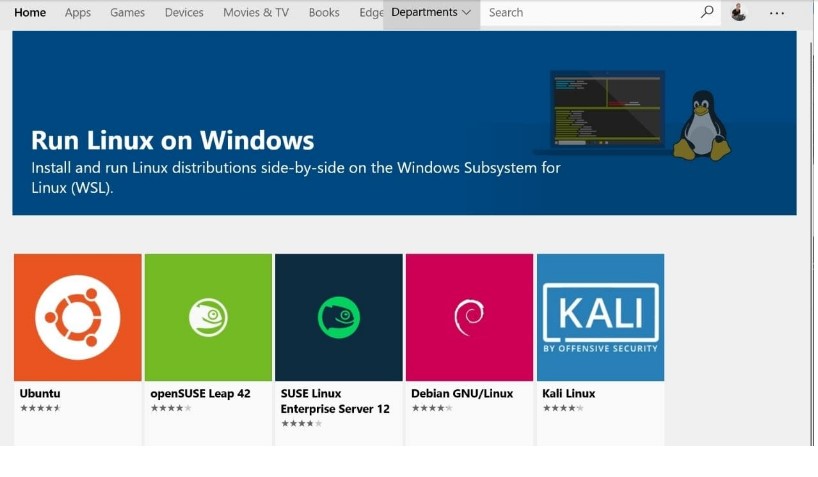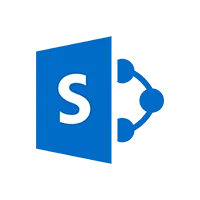What is embedded Linux? How embedded is used and can benefit the company? An embedded system is the parts of the computer software and hardware which is based on a microprocessor and microcontroller. It is controlled by RTOS or a real-time operating system, with limited memory, and both of them are different in complexity and size.
Embedded Linux is a Linux kernel or operating system which is designed for the embedded system and devices. Even though the embedded system uses the same kernel, it is different from the embedded standard operating system. Embedded Linux OS is tailored for embedded systems and hence it is very small in size, has minimal features, and requires less processing power.
The Linux kernel is optimized and modified and converted to an embedded Linux version. This kind of Linux can only run apps that are modified especially for such devices.
Why you should choose embedded Linux?
The major reason why embedded Linux is its open-source, low cost, adaptability to carry out specific functions microprocessors, and flexibility. Linux enables development, supports vendors, and allows multiple software as compared to the proprietary operating system. Plus, it allows a new approach which is a highly modular building block for building a custom system, leading to greater flexibility.
Embedded system for engineers
The versatility and flexibility of embedded Linux have become one of the preferred embedded systems for developers. Most electronic devices like mobiles, TVs, personal video creators, wearables, cameras, smart tablets, and many more electronic devices are developed using Linux.
It is also used in car software and many more network system which has a great demand in the market. Embedded Linux is dynamic in nature and hence it is in the trend and the demand to hire embedded developers is increasing.
How to develop embedded Linux on Windows
Introducing embedded Linux into your company means overcoming multiple challenges. This Linux guide will help you understand this system better. But it is important to replace the entire development environment? The answer is no. In most cases, the embedded Linux system development is done only by installing a Linux host.
The PC version offers in-built utilities and libraries than the embedded Linux system for Windows making the Linux host which is ideal for embedded Linux code development.
But what about those developers who are using Windows for development? The common solution for this is VMware Player or VirtualBox and this allows the engineers to keep using Windows as the preferred operating system. You can use the virtual machine along with Ubuntu or any other Linux distributions to develop products based on embedded Linux.
What is the Windows Subsystem for Linux (WSL)?
Window Subsystem for Linux (WSL) is a software introduced by Microsoft supporting the Linux environment. It is an in-built operating system that was introduced as Windows Subsystem for Linux (WSL) that was included in the latest Windows 10 version.

You can install WSL in your system and develop a fine embedded-based application for your device. The WSL offers a Microsoft-developed kernel interface that is compatible with Linux, which may then support the execution of a GNU userspace on top of it. In this manner, it is simple to install Linux development tools in the WSL-based native Linux environment. There is an upgraded version of WSL which is WSL 2 introduced in 2022 by Microsoft.
Embedded Linux and Android
If you are searching for embedded Linux for Android then the Android operating system is the best example. You can use this system for smartphones. The best part about the Android operating system is that it runs the same kind of Linux kernel as the embedded system, plus shares memory management, networking capabilities, and memory management.
Advantages of using embedded Linux
We have already discussed the compact version of Linux for embedded systems that provides the services and features following the application requirements and operation of the embedded system. The following are the main advantages of an embedded Linux system.
Similar to Linux, the prime advantage of Linux over other operating systems is the use of open source. This turns into the low cost of production along with multiple software existence, support and development provider, robust and stable kernel, and openness in terms of the license.
Additionally, the ability to read, redistribute, and modify the source code which integrated with an approach of advanced modular building blocks for custom embedded systems. All these advantages work in providing greater flexibility in the design possibilities.
Disadvantages of embedded Linux
It is important to note that complexity is one of embedded Linux’s potential drawbacks. Compared to other embedded development environments, embedded Linux has more features because it is open-source and has undergone numerous developments. Linux’s extensive codebase (both on your system and in the community) leads to an almost limitless level of complexity.
Hire Embedded Developers from Adequate Infosoft
Now, if you are looking for skilled and professional embedded developers, then Infosoft is the go-to embedded development company. A knowledgeable and experienced group of embedded software engineers is required for the development of an innovative and secure solution. A well-known custom software development firm in India, Adequate Infosoft, hires skilled embedded software engineers.
More than 30 nations, including India, the USA, Sweden, Canada, Singapore, South Africa, Malaysia, Ghana, the Netherlands, Hungary, Austria, and Denmark, have benefited from our services.
The post What is Embedded Linux and how it is used appeared first on .
Tags:
- Embedded System Design
- hire Embedded developers
- Software Development Company
- embedded linux
- embedded linux os
- embedded windows
- microcontroller and embedded systems
- what is embedded linux
- windows embedded standards
- wsl 2

 .NET MAUI Development
.NET MAUI Development
 Xamarin Application Development
Xamarin Application Development
 React Native App Development
React Native App Development
 iOS Application Development
iOS Application Development
 Android Application Development
Android Application Development
 Android Wear App Development
Android Wear App Development
 Ionic Development
Ionic Development
 iBeacon Application Development
iBeacon Application Development
 Universal Windows Platform (UWP)
Universal Windows Platform (UWP)
 Kotlin Application Development
Kotlin Application Development
 Swift Application Development
Swift Application Development
 Flutter Application Development
Flutter Application Development
 PWA Application Development
PWA Application Development
 .NET Application Development
.NET Application Development
 .NET Nuke Development
.NET Nuke Development
 Microsoft Dynamics CRM
Microsoft Dynamics CRM
 Microsoft Small Business Solution
Microsoft Small Business Solution
 VB .NET Development
VB .NET Development
 C# Development
C# Development
 Sharepoint Migration
Sharepoint Migration
 Sharepoint Development
Sharepoint Development
 ASP.NET Core Development
ASP.NET Core Development
 ASP.NET Development
ASP.NET Development
 ASP.NET MVC Development
ASP.NET MVC Development
 Kentico CMS
Kentico CMS
 Umbraco CMS
Umbraco CMS
 AJAX Development
AJAX Development
 Agile Development
Agile Development
 Microsoft Bot
Microsoft Bot
 Microsoft Blazor
Microsoft Blazor
 Microsoft Azure Cognitive
Microsoft Azure Cognitive

 Mean Stack Development
Mean Stack Development
 Vue JS Development
Vue JS Development
 Javascript Development
Javascript Development
 Angular JS Development
Angular JS Development
 Next JS development
Next JS development
 Java Development
Java Development
 Python Development
Python Development
 Django Development
Django Development
 Cherrypy Development
Cherrypy Development
 NodeJS Development
NodeJS Development
 Laravel Development
Laravel Development
 CodeIgniter Development
CodeIgniter Development
 Zend Development
Zend Development
 Ruby on Rails Development
Ruby on Rails Development
 CakePHP Development
CakePHP Development
 PHP Website Development
PHP Website Development
 Symfony Development
Symfony Development
 Drupal Development
Drupal Development
 Joomla Development
Joomla Development
 Wordpress Development
Wordpress Development
 Offshore Software Development
Offshore Software Development
 Custom Application Development
Custom Application Development
 Full Stack Development
Full Stack Development
 AI & Machine Learning
AI & Machine Learning
 Custom CRM Solutions
Custom CRM Solutions
 Flask Software Development
Flask Software Development
 Electron JS Development
Electron JS Development
 ChatGPT Development
ChatGPT Development
 Magento Development
Magento Development
 Magento 2.0 Development
Magento 2.0 Development
 Magento Enterprise
Magento Enterprise
 Shopping Cart Development
Shopping Cart Development
 Prestashop Development
Prestashop Development
 Shopify Development
Shopify Development
 Open Cart Development
Open Cart Development
 WooCommerce Development
WooCommerce Development
 BigCommerce Development
BigCommerce Development
 NopCommerce Development
NopCommerce Development
 Virto Commerce Development
Virto Commerce Development
 AspDotNetStorefront Development
AspDotNetStorefront Development
 RaspBerry Pi
RaspBerry Pi
 Firmware Software Development
Firmware Software Development
 ESP 32 Software Development
ESP 32 Software Development
 Embedded Development
Embedded Development
 Internet of Things
Internet of Things
 Nordic Development
Nordic Development
 HTML 5
HTML 5
 UI/UX Design
UI/UX Design
 Graphic Design
Graphic Design
 Adobe Photoshop
Adobe Photoshop
 XML Application Development
XML Application Development
 Cloud Computing Solutions
Cloud Computing Solutions
 Azure Cloud App Development
Azure Cloud App Development
 AWS Development
AWS Development
 Google Cloud Development
Google Cloud Development
 SQL Programming Development
SQL Programming Development
 MySQL Development
MySQL Development
 MongoDB Development
MongoDB Development
 Big Data
Big Data
 Robotic Process Automation
Robotic Process Automation
 Social Media Marketing
Social Media Marketing
 Search Engine Optimization
Search Engine Optimization
 QA Testing
QA Testing
 Software Testing
Software Testing
 Software Security
Software Security
 Maintenance And Support
Maintenance And Support
 I.T. Consulting Services
I.T. Consulting Services
 Business Intelligence
Business Intelligence
 YII Development
YII Development
 Data Analysis
Data Analysis
 Alexa Skills Development
Alexa Skills Development
 On Demand App for Mobile repairing services
On Demand App for Mobile repairing services
 On Demand App for Car Service Booking
On Demand App for Car Service Booking
 On Demand App for Cleaning Services
On Demand App for Cleaning Services
 On Demand App for Pharmacy
On Demand App for Pharmacy
 On Demand Dedicated Developers
On Demand Dedicated Developers





Leave a Reply